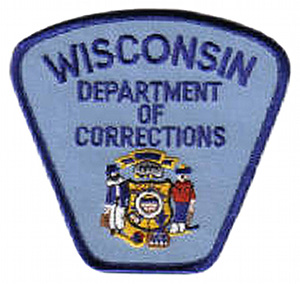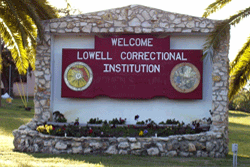
The Mississippi Department of Corrections (MDOC) is a state agency of Mississippi that operates prisons. It has its headquarters in Jackson. As of 2020 Burl Cain is the commissioner.
Piedmont Geriatric Hospital is a geriatric hospital located in the state of Virginia. It is Virginia's only state facility solely dedicated to the evaluation and treatment of persons over the age of 65. The 123-bed geriatric hospital is located in Burkeville on the 300-acre (120 ha) site of the former Piedmont Sanatorium. Founded in 1967, the facility employs 320 staff members and is a training site for major universities, colleges, and vocational schools in geropsychiatry and other clinical specialties.
Special Alternative Incarceration Facility (SAI) was an alternative prison in Chelsea, Michigan. It was formerly a minimum security boot camp (correctional) known as Camp Cassidy Lake for male and female probationers. The facility was a part of the Michigan Department of Corrections.

The California Department of Corrections and Rehabilitation (CDCR) is the penal law enforcement agency of the government of California responsible for the operation of the California state prison and parole systems. Its headquarters are in Sacramento.

The Tennessee Department of Correction (TDOC) is a Cabinet-level agency within the Tennessee state government responsible for the oversight of more than 20,000 convicted offenders in Tennessee's fourteen prisons, three of which are privately managed by CoreCivic. The department is headed by the Tennessee Commissioner of Correction, who is currently Frank Strada. TDOC facilities' medical and mental health services are provided by Corizon. Juvenile offenders not sentenced as adults are supervised by the independent Tennessee Department of Children's Services, while inmates granted parole or sentenced to probation are overseen by the Department of Correction (TDOC)/Department of Parole. The agency is fully accredited by the American Correctional Association. The department has its headquarters on the sixth floor of the Rachel Jackson Building in Nashville.

The New Hampshire Department of Corrections is the government agency in the U.S. state of New Hampshire charged with overseeing the state correctional facilities, supervising probation and parolees, and serving in an advisory capacity in the prevention of crime and delinquency. As of June 30, 2013, the Department had an inmate population of 2,791, 15,267 on probation or parole, and 893 total employees, 470 as corrections officers and 64 as probation/parole officers. The agency has its headquarters in Concord.

The New York State Department of Corrections and Community Supervision (NYSDOCCS) is the department of the New York State government that administers the state prison and parole system, including 44 prisons funded by the state government.

California Substance Abuse Treatment Facility and State Prison, Corcoran (SATF) is a male-only state prison located in the city of Corcoran, in Kings County, California, specifically designed to house inmates who have substance use disorder. It is sometimes referred to as California Substance Abuse Treatment Facility, and Corcoran II.

The Indiana Women's Prison was established in 1873 as the first adult female correctional facility in the country. The original location of the prison was one mile (1.6 km) east of downtown Indianapolis. It has since moved to 2596 Girls School Road, former location of the Indianapolis Juvenile Correctional Facility. As of 2005, it had an average daily population of 420 inmates, most of whom are members of special-needs populations, such as geriatric, mentally ill, pregnant, and juveniles sentenced as adults. By the end of 2015, the population increased to 599 inmates. Security levels range from medium to maximum. The prison holds Indiana's only death row for women; however, it currently has no death row inmates. The one woman under an Indiana death sentence, Debra Denise Brown, had her sentence commuted to 140 years imprisonment in 2018 and is being held in Ohio.

The Texas Department of Criminal Justice (TDCJ) is a department of the government of the U.S. state of Texas. The TDCJ is responsible for statewide criminal justice for adult offenders, including managing offenders in state prisons, state jails, and private correctional facilities, funding and certain oversight of community supervision, and supervision of offenders released from prison on parole or mandatory supervision. The TDCJ operates the largest prison system in the United States.
The Patuxent Institution is located in Jessup, Maryland one mile east of U.S. Route 1 on Maryland Route 175. It is a treatment-oriented maximum-security correctional facility. With a maximum static capacity of 987 beds, it offers the most diverse services to the most varied male and female offender population in the state, and possibly in the nation. Patuxent Institution is the only institution for sentenced criminals in Maryland that is not part of the Maryland Department of Public Safety and Correctional Services. Its foundation lies in the Maryland Public General Law, codified as Title 4 of the Correctional Services Article. The predecessor of this statute, Article 31B of the Public General Laws of Maryland, was enacted in 1951.

The Wisconsin Department of Corrections (WIDOC) is an administrative department in the executive branch of the state of Wisconsin responsible for corrections in Wisconsin, including state prisons and community supervision. The secretary is a cabinet member appointed by the governor of Wisconsin and confirmed by the Wisconsin Senate.

The Department of Public Safety and Corrections (DPS&C) is a state law enforcement agency responsible for the incarceration of inmates and management of facilities at state prisons within the state of Louisiana. The agency is headquartered in Baton Rouge. The agency comprises two major areas: Public Safety Services and Corrections Services. The secretary, who is appointed by the governor of Louisiana, serves as the department's chief executive officer. The Corrections Services deputy secretary, undersecretary, and assistant secretaries for the Office of Adult Services and the Office of Youth Development report directly to the secretary. Headquarters administration consists of centralized divisions that support the management and operations of the adult and juvenile institutions, adult and juvenile probation and parole district offices, and all other services provided by the department.

Lowell Correctional Institution is a women's prison in unincorporated Marion County, Florida, north of Ocala, in the unincorporated area of Lowell. A part of the Florida Department of Corrections, it serves as the primary prison for women in the state. Almost 3,000 women are incarcerated in the complex, which includes the Lowell Annex. As of 2015 2,696 women are in the main Lowell CI, making it the largest prison for women in the United States; its prison population became larger than that of the Central California Women's Facility that year.
The Minnesota Correctional Facility – Lino Lakes (MCF-LL) is a state prison located in Lino Lakes, Minnesota, USA.

The Idaho Department of Correction (IDOC) operates nine prisons, four community release centers and 20 probation and parole offices in seven districts located throughout the state of Idaho. The agency has its headquarters in Boise.

State Correctional Institution – Chester is a medium-security, all-male correctional facility in Chester, Pennsylvania, United States, within the Philadelphia metropolitan area.
Thumb Correctional Facility (TCF) is a Michigan prison, located in Lapeer, for male prisoners. It is a Level II, lower-level security prison.
Earnest C. Brooks Correctional Facility (LRF) is a Michigan prison, located in Muskegon, for adult male prisoners.
Washington Corrections Center for Women is a Washington State Department of Corrections women's prison located in Gig Harbor, Washington. With an operating capacity of 740, it is the largest women's prison in the state and is surrounded by Washington State Route 16, and McCormick forest park. It opened 53 years ago in 1971, 82 years after statehood.













